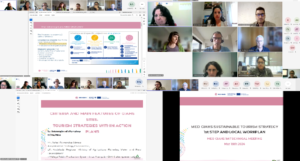The Globally Important Agricultural Heritage Systems (GIAHS) are agroecosystems inhabited by communities that live in an intricate relationship with their territory. These evolving sites are resilient systems characterised by remarkable agrobiodiversity, traditional knowledge, invaluable cultures and landscapes, sustainably managed by farmers, herders, fisherfolk and forest people in ways that contribute to their livelihoods and food security.
Each of these agricultural systems has to develop a process in which the various stakeholders within the territory have to get involved with the objective of designing an action plan. That is called “action plan for a dynamic conservation of the GIAHS site” and it aims at preserving, transmitting and developing the system.
Even candidates for GIAHS sites need go on a participatory process when preparing their candidacy. A process which will be very important and useful to design this already mentioned action plan once they get the recognition.
For that, GIAHS sites are good examples of participatory processes where representatives from the agricultural systems, together with associations, public administration, universities and businesses coming from other sectors define how to protect and sustainably develop their GIAHS. This is a process continuously going on as the action plans need to be implemented and afterwards updated after five years.
Sustainable tourism in GIAHS territories is a key driver of socio-economic growth that can reduce inequalities, increase resilience of rural communities and boost rural incomes. Tourism, then, is part of the strategy of GIAHS sites in their action plans. And when searching for a sustainable tourism in these territories one of the premises is getting everyone involved in the design of the touristic offer.
But this idyllic idea is not always easy to carry out because of the many different interests of the stakeholders and the lack of touristic experiences ready to be lived. This is one of the first challenges for the 3 GIAHS sites and the 3 candidates involved in the MED GIAHS project: bringing interests into a common space and arising the needs and the touristic resources.
To do so, the project had the first technical meeting last 15th May to give the technicians who are going to work in the territories the necessary tools, a common way to proceed and a common narrative. A model for value creation within GIAHS sites or agricultural systems which are candidate for that recognition which was previously tested in a first project called VALSIPAM (https://valsipam.eu/). Its implementation will start before June 30th when local meetings will take place bringing stakeholders together. Bienvenue sur Programme Interreg MED.



